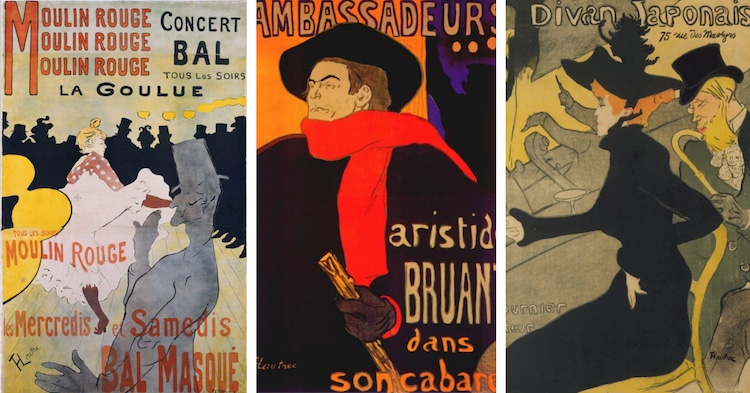
Post-Impressionist painter Henri de Toulouse-Lautrec is renowned for his expressive interpretations of turn-of-the-century Paris. Fascinated by the capital city’s colorful nightlife, the French artist created a collection of 363 posters featuring Paris’ most popular cafés, cabarets, and entertainers.
Admired for their bold graphics, vivid color palettes, and focus on the figure, these designs simultaneously served as advertisements and attracted collectors, blurring the line between mass produced prints and fine art. Today, Toulouse-Lautrec’s posters continue to charm audiences, offering a graphic glimpse into La Belle Époque.
Background
Prior to creating prints and posters, Toulouse-Lautrec worked primarily as a painter. As a young adult living in Paris, he mingled with the city’s most avant-garde artists and frequently showed his work in independent exhibitions.
With this exposure, the artist was well-established and well-liked by the 1890s, when sites in Montmartre—Paris’ most artistic arrondissement, or district—commissioned him to create advertisements for their spectacles.
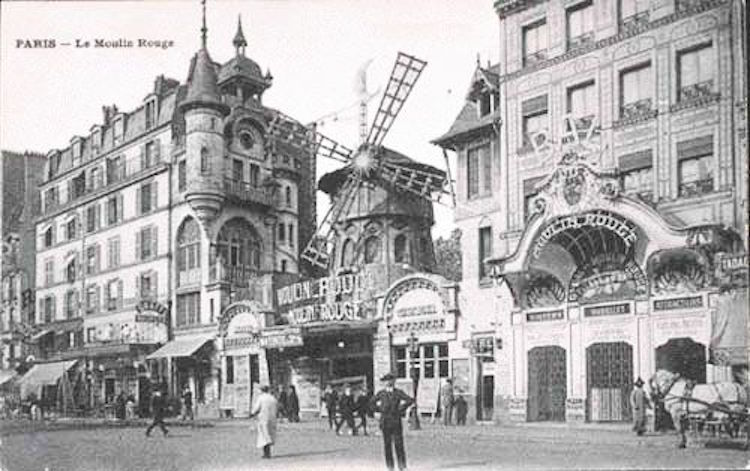
Montmartre in 1900 (Photo: Moulin Rouge 1900 [Public domain], via Wikimedia Commons)
Subject Matter
Unlike his paintings, which tend to explore and present intimate interactions and gritty, everyday situations, his posters showcase the fanciful nature of Parisian nightlife.
Cabarets
Given Toulouse-Lautrec’s tendency to visit Montmartre’s nightclubs, it is no surprise that cabarets compose the majority of his commissions. These café-concerts include Divan Japonais, Ambassadeurs, and, of course, the world-famous Moulin Rouge—the first cabaret to commission Toulouse-Lautrec.

‘Divan Japonais’ (1892-1893) (Photo: Henri de Toulouse-Lautrec [Public domain], via Wikimedia Commons)

‘Ambassadeurs, Aristide Bruant Dans Son Cabaret’ (1892) (Photo: Toulouse-Lautrec, Henri de [Public domain], via Wikimedia Commons)
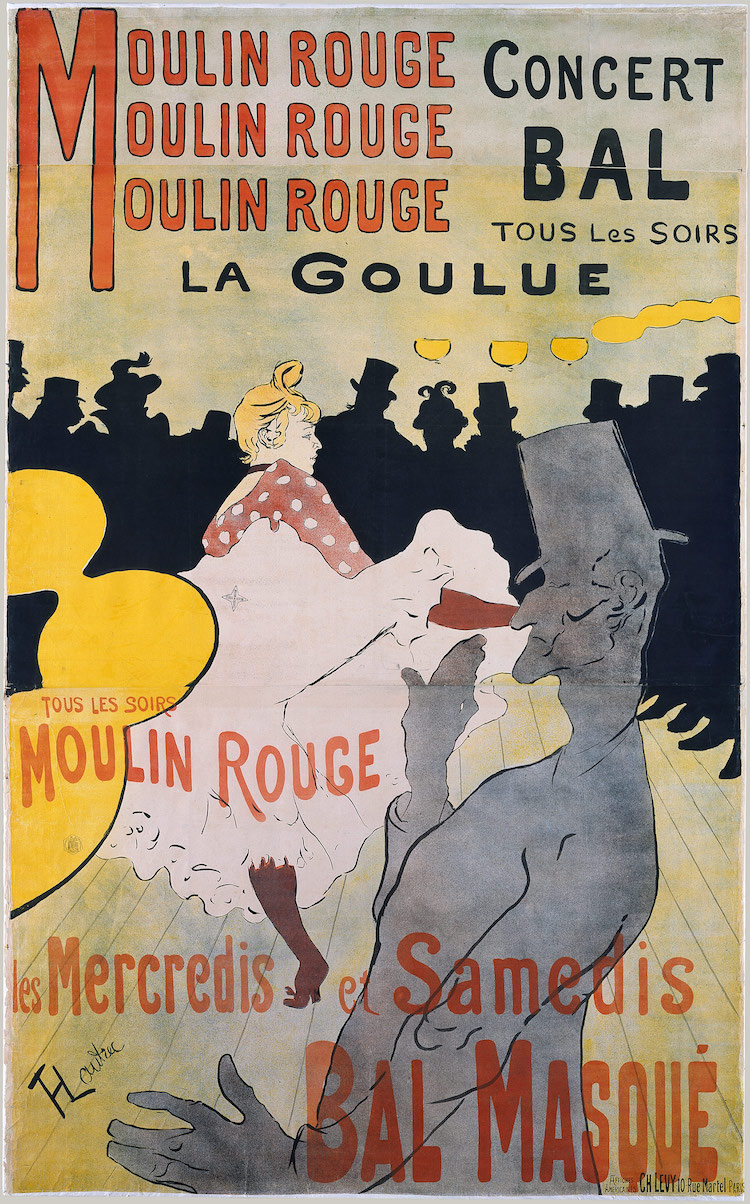
‘Moulin Rouge: La Goulue’ (1891) (Photo: Toulouse-Lautrec, Henri de (1864 – 1901) – Artist (French) Details of artist on Google Art Project [Public domain], via Wikimedia Commons)
Performers
To illustrate the type of entertainment offered at these sites, Toulouse-Lautrec often focused on performers in his posters. Rather than portray anonymous or fictitious figures, however, the artist preferred to depict real-life individuals—namely, Jane Avril, a French can-can dancer and his favorite model and muse.
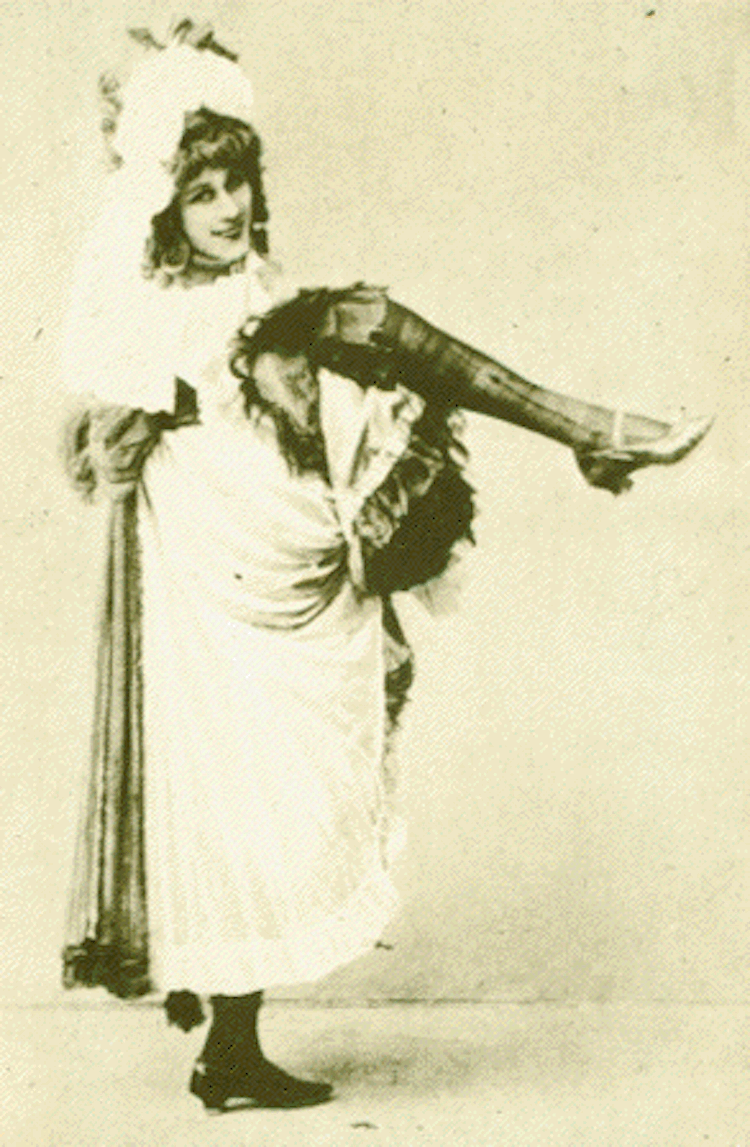
Jane Avril (Photo: Paul Sescau (1858-1926) [Public domain], via Wikimedia Commons)
Jane Avril appears in many of the artist’s posters, including Divan Japonais (1892), Jardin de Paris (1893), Jane Avril (1893), and La troupe de Mlle Eglantine (1895). On top of his obvious interest in portraying the dancer, the artist’s infatuation with Avril is made clear by Paul Leclerq, one of the artist’s contemporaries. “In the midst of the crowd,” he recalled, “there was a stir, and a line of people started to form: Jane Avril was dancing, twirling, gracefully, lightly, a little madly; pale, skinny, thoroughbred, she twirled and reversed, weightless, fed on flowers; Lautrec was shouting out his admiration.”

‘Jane Avril at the Jardin de Paris’ (1893) (Photo: Toulouse-Lautrec, Henri de [Public domain], via Wikimedia Commons)
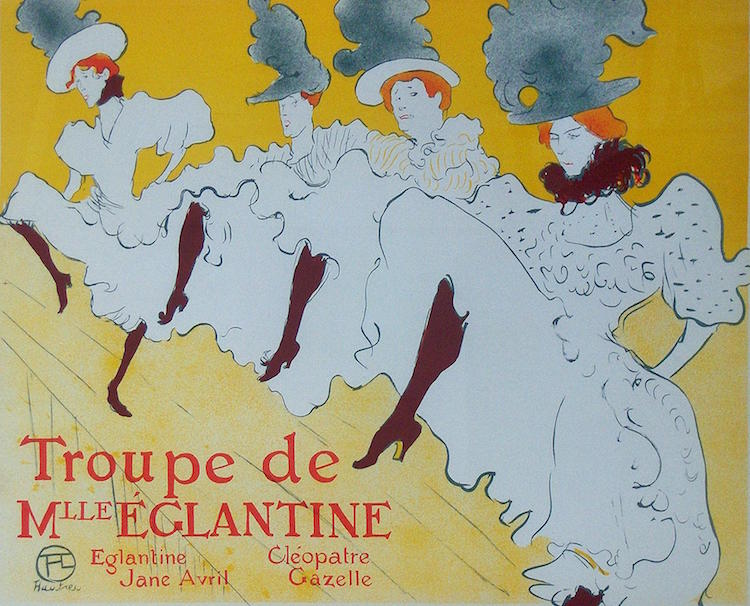
‘Troupe de Mlle. Eglantine’ (1895-1896) (Photo: Georges Jansoone (JoJan) – artwork by Henri de Toulouse-Lautrec, via Wikimedia Commons)
